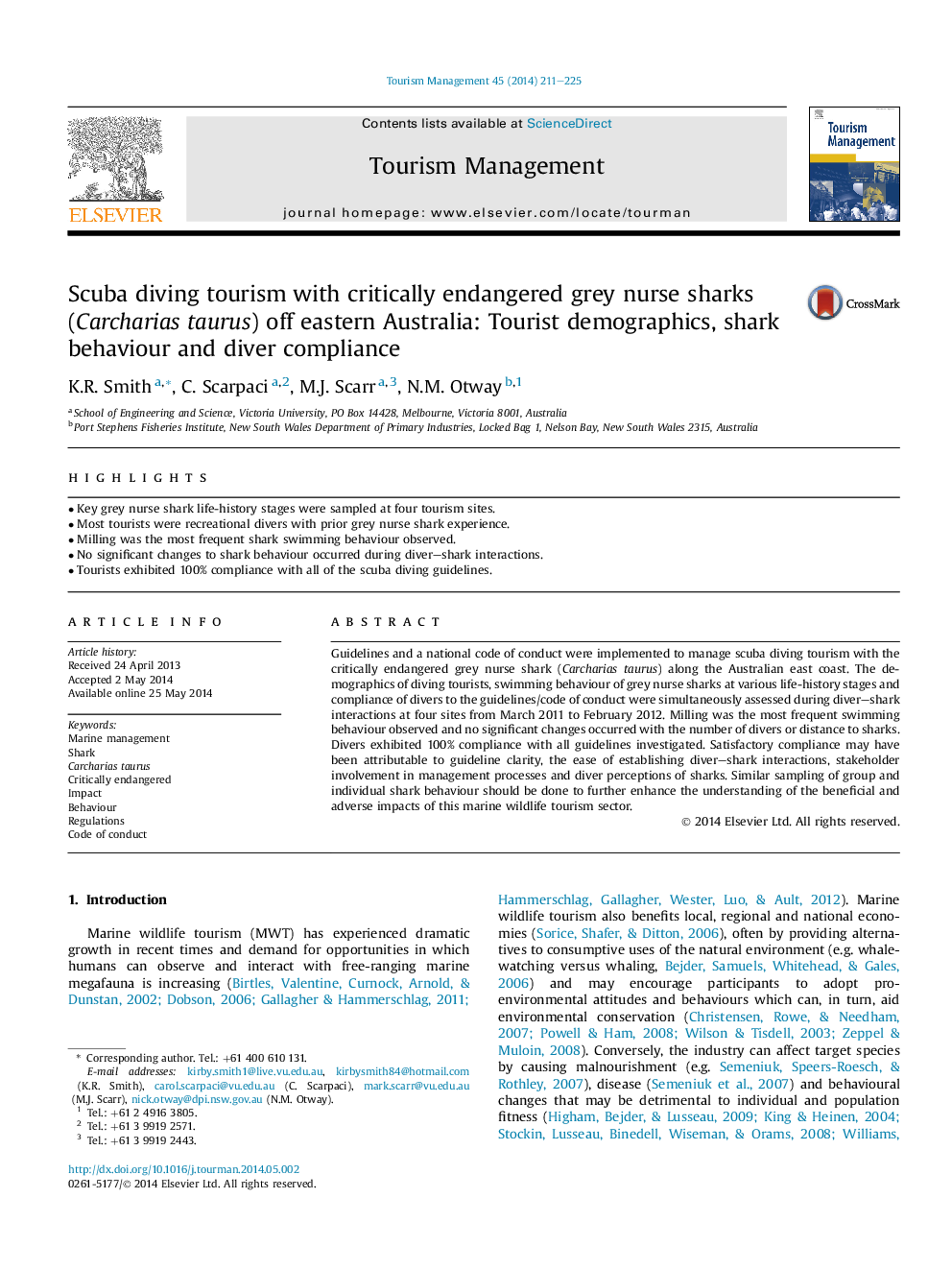| Article ID | Journal | Published Year | Pages | File Type |
|---|---|---|---|---|
| 1012071 | Tourism Management | 2014 | 15 Pages |
•Key grey nurse shark life-history stages were sampled at four tourism sites.•Most tourists were recreational divers with prior grey nurse shark experience.•Milling was the most frequent shark swimming behaviour observed.•No significant changes to shark behaviour occurred during diver–shark interactions.•Tourists exhibited 100% compliance with all of the scuba diving guidelines.
Guidelines and a national code of conduct were implemented to manage scuba diving tourism with the critically endangered grey nurse shark (Carcharias taurus) along the Australian east coast. The demographics of diving tourists, swimming behaviour of grey nurse sharks at various life-history stages and compliance of divers to the guidelines/code of conduct were simultaneously assessed during diver–shark interactions at four sites from March 2011 to February 2012. Milling was the most frequent swimming behaviour observed and no significant changes occurred with the number of divers or distance to sharks. Divers exhibited 100% compliance with all guidelines investigated. Satisfactory compliance may have been attributable to guideline clarity, the ease of establishing diver–shark interactions, stakeholder involvement in management processes and diver perceptions of sharks. Similar sampling of group and individual shark behaviour should be done to further enhance the understanding of the beneficial and adverse impacts of this marine wildlife tourism sector.
